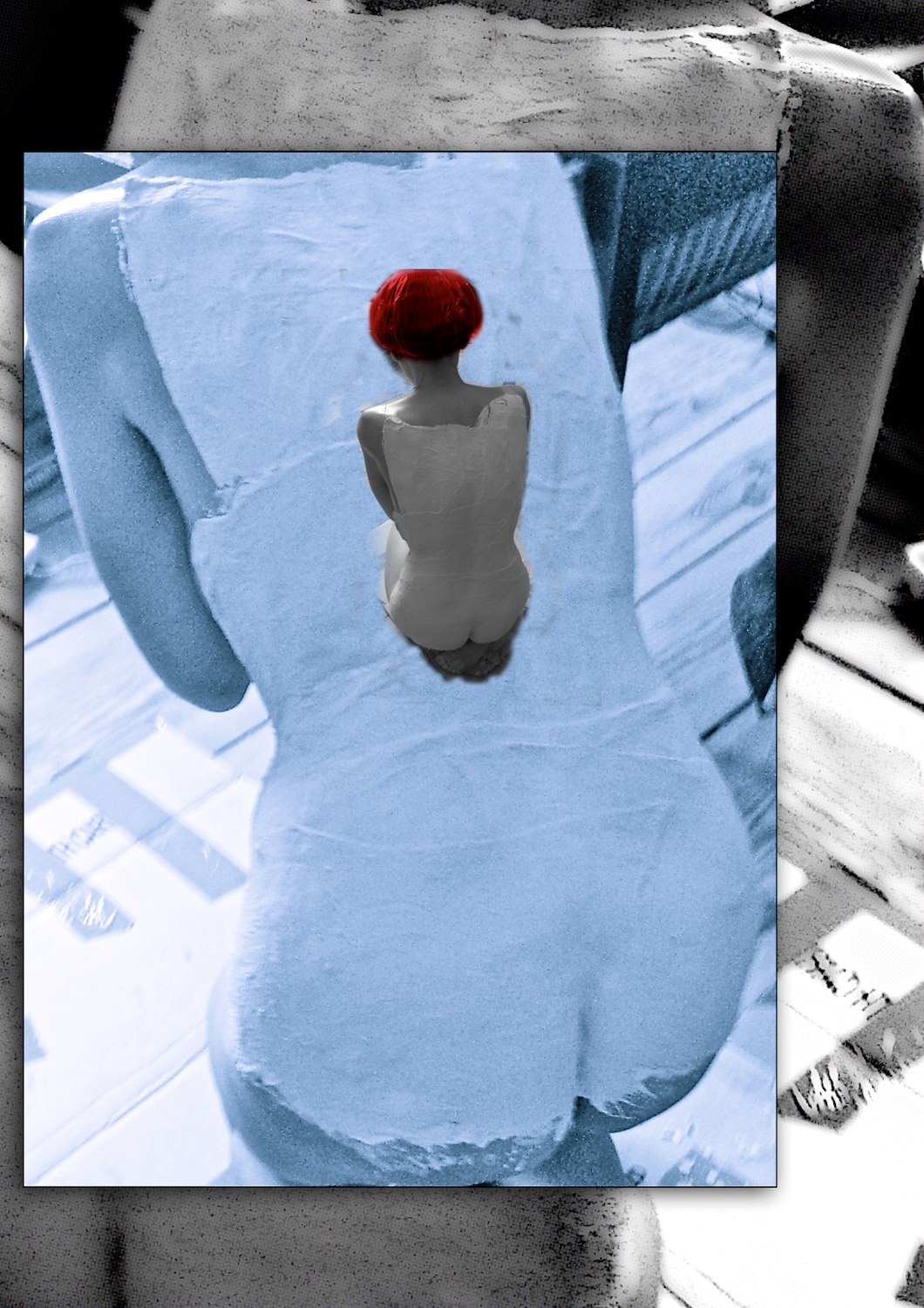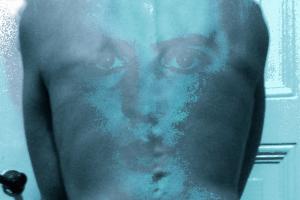ART OF IMPERFECTION, SUBTRACTION AND SDEFINITION
art is dead.
conceptually deprived of its obligation to exist.
empty argumentations. useless disquisitions. despairing gibberish.
the artist will never die.
the artist is he/she who cannot do anything else but what he/she does:
to think per abstraction and to express abstraction with whatever he/she finds around him/her.
the outsider, not for choice but in spirit.
the person who isn’t here or there.
the storyteller.
the ineffective.
- the importance of sdefinition:
we live in the future, where everything has already been said and done;
sometimes not experienced.
- the importance of the subtraction:
we live in the future, where the superfluous goes beyond the surplus value.
- the importance of the imperfection:
we live in the future, where the “decorative” (perfection) has smeared
the life.
state of incessant imperfection
nothing lasts, nothing is complete, nothing is perfect.
as wabi-sabi (in Kanji: 侘寂) [侘 (wabi) and 寂 (sabi)], the Japanese aesthetics based on the transience of all things, which in turns derives from the Buddhist doctrine of anitya (Sanskrit, Japanese, mujō), which means impermanence.
beauty is imperfect, impermanent and incomplete.
the “artistic product” is that, which has been crafted, as well as that, which the artistic gesture has not accomplished.
and exactly this lack, this absence, is what’s important.
to tell a mental path is not interesting; maybe, his own mental paths in front of a cup of coffee.
an “artistic product” is made of contingencies, chance, true/centratura.
it is different to anyone: you like it or not, it tells you something or lets you cold. it makes you angry. it provokes. it gives you enthusiasm. he does not affect you. it is. it has its own life. it does not belong to the artist anymore.
simplicity. sincerity. calmness. inexhaustibility. essentiality. asymmetry.
spirituality. abstraction. degradability. ambiguity.
private yet social.
intuitive.
relative.
variable.
idiosyncratic.
cyclic.
in harmony with the nature.
organic.
curved.
natural.
raw.
rough.
tactile.
of seasonal light.
obscure.
warm.
WHY THE NAKED BODY?
® Batsceba Hardy & Alma A .®
We are not interested in the use of [the] naked body as provocation.
The naked body evoke simplicity, spontaneity. The naked body in its nudity is sincere. In our work, the expression of nudity, contrary to what it could seems, is an ultimate attempt to recovery. It’s a “disguise” [of the absurd]. It’s a way to protect oneself, laying down the arms in advance/a priori. It’s the ultimate and profound way to hide in the depth of one own self, in an loneliness past redemption. The nude body is a sophisticated abyss of personae.
The nude body allows an existentialist analysis of the object.
The rest is always of sociological character.
The naked body is essential.
Why the obsessive use of the back? – Who’s the figure facing backwards?
The Back. The largest surface of the body. Mournful. The back, my answer to the world/society. What you can see of me. The writing of a life on the back. A surface to engrave.
Not showing. Concealing oneself, caught up armless, helpless, naked.
Seclusion.
Why holding on to?
Clinging on to oneself, to a reason to live, to our own mystifications, to our own mistakes, to our own fears. Clinging on to, not to be eradicated, evicted, not to be sucked up in the darkness of the universe, not to be swallowed up by the social adventures, by the bureaucrats, by the professors.
©2009
click on image
® Batsceba Hardy & Alma A .®
ARTE DELL’IMPERFEZIONE, SOTTRAZIONE E SDEFINIZIONE
l’arte è morta.
concettualmente deprivata della sua necessità di esistere.
argomentazioni vuote. inutili dissertazioni. bla bla disperante.
ma l’artista non morirà mai.
l’artista è colui che non sa fare altro che quello che fa:
pensare per astrazione ed esprimere astrazione con ogni cosa lo circonda.
il diverso non per scelta ma per essenza.
colui che sta al di fuori.
il raccontatore di storie.
l’inefficace.
- l’importanza della sdefinizione:
viviamo nel futuro, dove ogni cosa è già stata detta e fatta, a volte non provata.
- l’importanza della sottrazione:
viviamo nel futuro, dove il superfluo ha superato il plusvalore.
- l’importanza dell’imperfezione:
viviamo nel futuro dove il decorativo (perfezione) ha imbrattato la vita.
stato di continua imperfezione
nulla dura, nulla è finito, nulla è perfetto.
esattamente come per il wabi-sabi (in Kanji: 侘寂) [侘 (wabi) e 寂 (sabi)]l’estetica giapponese fondata sulla transitorietà delle cose che deriva dalla dottrina buddhista dell'anitya, un termine sanscrito (pāli anicca, cin. 無常 wúcháng, giapp. mujō, tib. mi rtag pa) cioé dell’impermanenza.
la bellezza è imperfetta, impermanente e incompleta.
il “prodotto artistico” è ciò che è stato fatto, ma anche quello che il gesto artistico non ha compiuto. ed è questa mancanza la più importante.
raccontare un percorso mentale non è interessante. forse ha senso raccontare i propri percorsi mentali davanti a un caffé.
un “prodotto artistico” è fatto di imprevisti, casualità, centratura.
per ognuno risulta diverso: piace o non piace, comunica o fa restare freddi. fa arrabbiare. provoca. entusiasma. lascia indifferenti. è. vive di vita propria. non appartiene più all’artista.
semplicità. sincerità. calma. inesauribilità. essenzialità. asimmetria.
spiritualità. astrazione. degradabilità. ambiguità. naturalezza.
privato ma sociale.
intuitivo.
relativo.
variabile.
idiosincratico.
ciclico.
in armonia con la natura.
organico.
curvo.
naturale.
grezzo.
ruvido.
tattile.
della luce stagionale.
scuro.
caldo.
PERCHÉ IL CORPO NUDO?
Non ci interessa l’uso del corpo nudo come provocazione.
Il corpo nudo evoca semplicità, naturalezza. Il corpo nella sua nudità è sincero. Nel nostro lavoro, l’espressione della nudità è, al contrario di quanto potrebbe apparire, un ultimo tentativo di redimersi. È il “mascheramento” o per assurdo. È il modo di proteggersi, gettando le armi a priori. È il modo ultimo e profondo di nascondersi in fondo a se stessi, in una irrecuperabile solitudine. Il corpo nudo è un abisso di personae sofisticato.
Il corpo nudo permette di affrontare l’oggetto sul piano esistenziale.
Tutto il resto ha sempre carattere sociologico.
Il corpo nudo è essenziale.
Perché l’uso ossessivo della schiena? – Chi è la figura di spalle?
La schiena. La superficie più grande del corpo. Dolente. La schiena, come riposta al mondo. Ciò che di me potete vedere. La scrittura di una vita sulla schiena. La superficie da incidere.
Il non mostrarsi. Il celarsi, colti disarmati, indifesi, nudi. Il racchiudersi.
Perché l’aggrapparsi?
Aggrapparsi a se stessi, alla ragione di vita, alle proprie mistificazioni, ai propri errori, alle proprie paure. Aggrapparsi per non essere strappati, per non essere risucchiati nell’oscurità dell’universo, per non essere divorati dagli avventurieri sociali, dai burocrati, dai professori.
® Batsceba Hardy & Alma A .®
click on
ART IS DEAD
Non esiste un problema di autenticità dell'opera d'arte nell'era della riproducibilità, come già avevano dimostrato le avanguardie (penso al Dada... )
Il risultato è la totale sparizione delle diversità fra creatore e fruitore.
L'opera d'arte è sempre stata una sovrastruttura creata dal potere e l'artista ne è la vittima. Oggi sempre più invisibile.
L'arte è morta: oggi esiste il problema dell'autenticità dell'artista
There's not a problem of authenticity of the artwork in the era of reproducibility, as the avant-garde movements had already demonstrated (I am thinking of Dada ... )
The result is the total disappearance of the differences between creator and user.
The art has always been a superstructure created from power and the artist is the victim. Today more and more invisible.
The art is dead: today there is the problem of the authenticity of the artist
Dichiarazione di assenza
I don't consider myself as an artist, I'd rather consider myself as an artisan. If I should really be forced to come up with a definiton, it'd be "artist of Irreality".
It means that I'm allowed to stay outside, beyond things. Living eternally in the interspaces, those places carved in Space and Time that can be captured on camera or on paper, telling stories. It means having no boundaries nor impositions.
In many of my works I tackle the subjects of Invisibility, transparency. Empty and full. Both in a narrative and visual way. Photography and writing are just two different ways to depict all this. That is, Absence.
As a matter of fact, I think and state that is completely unnecessary that writers attend the launch of their books, talk about them to a bored or excited audience, or photographers become the main attraction at the opening of their last exhibition. Authors live in their works, don't they?
I don't like to appear because I exist in what I create, in my writings, in my photographs. I communicate, I show things, I suggest things. I tell things. I confess myself and play with Fiction: because we are what we imagine.
Thus I don't feel compelled to justify my absence, today. I'm not the first nor I'll be last.
But as an author I don't want to be put on sale, in the consumeristic society we live in.
Non mi penso come un'artista, preferisco pensarmi come un'artigiana dell'arte. Se proprio devo definirmi mi definisco un'artista dell'irrealtà. Significa proprio questo: poter stare al di fuori, al di là. Vivere perennemente negli interspazi, quelli che possono essere colti dall’obbiettivo fotografico o dal raccontare. Non avere confini, obblighi.
In molti miei libri parlo di invisibilità, trasparenza. E anche nei miei lavori fotografici parlo di vuoto e pieno. Di assenza.
Come conseguenza di questo mio pensiero, dico che non occorre che intervengano gli autori alle presentazioni dei libri, alle inaugurazioni delle mostre. Gli autori vivono nelle loro opere.
Non amo apparire perché prendo vita in quello che produco, nei miei scritti, nelle mie fotografie. Comunico e mostro, do spunti e suggerisco. Mi confesso e gioco anche con la finzione: perché noi siamo quello che immaginiamo di essere.
Così, non devo giustificare oggi la mia assenza, non sono la prima e non sarò l'ultima.
In questa società del consumo dove tutto è in vendita, come autrice non voglio essere messa in vendita.
__________________________________________
[The massification has undergone an irremediable transformation: the collective individualism has transformed the society into a global mosaic.
Now we should speak of "mosaicification"]
Batsceba Hardy
[La massificazione ha subito una trasformazione: l'individualismo collettivo ha trasformato la società in un mosaico globale.
Ormai dovremmo parlare di "mosaicizzazione"]
Batsceba Hardy
___________________________________________________________
[We should have known
that each planning is useless
that history does not teach
because there is nothing to learn.
Step by step we write our future
and it will always be so.
What can you then expect from someone who knows nothing about their origins
and has an explanation for everything?]
***
[There were thousands of us and now we are billions.
Amplified along with technology.
And now, lost in the maze of global communication,
We have even demolished those last barriers
Which were the certainties we built over the centuries.]
[Avremmo già dovuto capire
che ogni programmazione è inutile,
che la storia non insegna
perché non c’è nulla da imparare.
Scriviamo passo per passo il nostro futuro.
E sarà sempre e solo così.
Cosa si può pretendere da qualcuno che non sa nulla delle proprie origini
e s’inventa spiegazioni per ogni cosa?]
***
[Eravamo in mille e ora siamo miliardi.
Amplificati insieme alla tecnologia.
E ora, persi nel labirinto della comunicazione globale,
abbiamo abbattuto anche quelle barriere
che erano le certezze costruite nei secoli.]
Batsceba Hardy
The impoverishment of thought is the direct consequence of the impoverishment of language.
people use less and less words and are no longer able to understand what they read
[riflessioni didascaliche] 1
la fotografia si avvicina al pensiero filosofico più di quanto non si riesca a immaginare.
immaginandolo si arriva a scoprire una realtà che corre parallela alla "nostra" realtà.
la difficoltà sta nel renderla evidente agli altri.
photography approaches philosophical thought more than we can imagine.
imagining it you get to discover a reality that runs parallel to 'our' reality.
the difficulty lies in making it obvious to others.
© Batecaba Hardy

